
Conservation Effects Assessment Project (CEAP) wetland assessments quantify the effects of voluntary conservation efforts for wetlands located in agricultural settings at both regional and national scales.
About Wetland Assessments
Wetlands occur where water covers the soil or is present near the soil surface either seasonally or year-round. They include marshes, swamps, bogs, and fens. Beyond providing wildlife habitat and increasing biodiversity, wetlands serve to remove sediment, nutrients, and other pollutants, contain floodwaters, and store carbon. Through CEAP, the Natural Resources Conservation Service (NRCS) develops monitoring and modeling processes that improve wetland conservation efforts on private working lands.
CEAP wetland assessments across multiple scales inform voluntary conservation actions for a diversity of land managers and partners by improving predictions of responses in wetland functions and ecosystem services. Details on the methods for CEAP wetland assessments are available on the CEAP Frequently Asked Questions page.
Wetland Publications
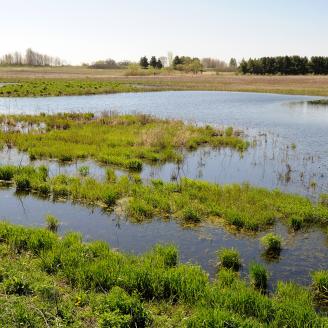
Reports, Articles, and Bibliographies
The below publications provide data and associated insights on the effects of voluntary conservation across the nation's wetlands. Categories include reports and articles and bibliographies. Within each category publications are organized in descending order by date.
Reports and Articles
Prairie Pothole Region
- Wetland-mediated nitrate reductions attenuate downstream:
Insights from a modeling study, 2024 ,Journal of Environmental Management - The Potential of Prairie Pothole Wetlands as an Agricultural Conservation Practice - A Synthesis of Empirical Data, 2023, Wetlands
- Wetlands in agricultural landscapes—Significant findings and recent advances from CEAP-Wetlands, 2020, Journal of Soil and Water Conservation
- Development of a novel framework for modeling field-scale conservation effects of depressional wetlands in agricultural landscapes, 2020, Journal of Soil and Water Conservation
- Modeling the Supporting Ecosystem Services of Depressional Wetlands in Agricultural Landscapes, 2020, Wetlands
- Modeling Effects of Crop Production, Energy Development and Conservation-Grassland Loss on Avian Habitat, 2019, PLOS ONE
- The Pothole Hydrology-Linked Systems Simulator [PHyLiSS]-Development and Application of a Systems Model for Prairie-Pothole Wetlands, 2018, U.S. Geological Survey Report
- The Integrated Landscape Modeling Partnership-Current Status and Future Directions, 2017 (6.33 MB)
- Modeling Effects of Conservation Grassland Losses on Amphibian Habitat, 2014, Biological Conservation
- Ecosystem Services Derived from Wetland Conservation Practices in the United States Prairie Pothole Region, 2008, U.S. Geological Survey Report
- Integrated Landscape Monitoring - Prairie Potholes Pilot: Tier II Study Plan, 2008 (1.18 MB)
- Prairie Pothole Regional Studies, 2008 (46.6 KB)
- Effects of Conservation Programs on Amphibians in Seasonal Wetlands of the Prairie Pothole Region's Glaciated Plain: FY 2006 Progress Report, 2007 (907 KB)
- Effects of Conservation Programs on Amphibians in Seasonal Wetlands of the Prairie Pothole Region's Glaciated Plain: FY 2005 Progress Report, 2006 (0.98 MB)
- Effects of Conservation Programs on Amphibians in Seasonal Wetlands of the Prairie Pothole Region's Glaciated Plain – proposal, 2005 (638 KB)
- Impact of U.S. Department of Interior and U.S. Department of Agriculture Programs on Ecological Services Derived from Restored Prairie Wetlands and Adjacent Grasslands, 2004 (993 KB)
Mid-Atlantic Region
- Native bee Pollination Ecosystem Services in Agricultural Wetlands and Riparian Protected Lands, Wetlands Journal, 2024
- Developmental framework for a desktop hydrogeomorphic wetland functional assessment derived from field-based data, 2024, Environmental Monitoring and Assessment
- Drainage ditch network extraction from lidar data using deep convolutional neural networks in a low relief landscape, 2023, Journal of Hydrology
- Detecting causal relationship of non‑floodplain wetland hydrologic connectivity using convergent cross mapping, 2023, Scientific Reports
- Estimation of base and surface flow using deep neural networks and a hydrologic model in two watersheds of the Chesapeake Bay, 2022, Journal of Hydrology
- Combined use of crop yield statistics and remotely sensed products for enhanced simulations of evapotranspiration within an agricultural watershed, 2022, Agricultural Water Management
- Utility of remotely sensed evapotranspiration products on assessing an improved model structure, 2021, Sustainability
- Uncertainty assessment of multi-parameter, multi-GCM, and multi-RCP simulations for streamflow and non-floodplain wetland (NFW) water storage, 2021, Journal of Hydrology
- Evaluating a remote wetland functional assessment along an alteration gradient in coastal plain depressional wetlands, 2020, Journal of Soil and Water Conservation
- Overview of the USDA Mid-Atlantic Regional Wetland Conservation Effects Assessment Project, 2020, Journal of Soil and Water Conservation
- Assessing the Effectiveness of Riparian Buffers for Reducing Organic Nitrogen Loads in the Coastal Plain of the Chesapeake Bay Watershed using a Watershed Model, 2020, Journal of Hydrology
- Assessment and Combination of SMAP and Sentinel-1A/B-Derived Soil Moisture Estimates With Land Surface Model Outputs in the Mid-Atlantic Coastal Plain, 2020, IEEE Transactions on Geoscience and Remote Sensing
- Use of Topographic Models for Mapping Soil Properties and Processes, 2020, Soil Systems
- Effects and Effectiveness of USDA Wetland Conservation Practices in the Mid-Atlantic Region: A Report on the CEAP Mid-Atlantic Regional Wetland Assessment 2008 – 2015 Summary, 2015, (195 KB)
- Effects and Effectiveness of USDA Wetland Conservation Practices in the Mid-Atlantic Region: A Report on the CEAP Mid-Atlantic Regional Wetland Assessment 2008 – 2015 Full Report, 2015, (9.05 MB)
- A Regional Classification of the Effectiveness of Depressional Wetlands at Mitigating Nitrogen Transport to Surface Waters in the Northern Atlantic Coastal Plain, 2012, USGS Report
- Forested Wetlands in the Chesapeake Bay Watershed, 2010, Agricultural Research
- Choptank Watershed Wetland Study, 2008 (34 KB)
- Mid-Atlantic Regional Assessment, 2008 (28.3 KB)
High Plains – Playa Lakes
- Major land use and vegetation influences on potential pollinator communities in the High Plains of Texas, 2022, Journal of Insect Conservation
- Influence of the Conservation Reserve Program (CRP) and playa wetlands on pollinator communities in the Southern High Plains, 2020, Journal of Environmental Management
- Depressional wetland classification and ecosystem service predictive models for the Integrative Landscape Modeling partnership, 2020, Journal of Soil and Water Conservation
- Ecosystems Services Estimation for Depressional Wetlands in the High Plains Region: Sampling Manual for the Integrated Landscape Modeling Partnership, 2020 (7.54 MB)
- Effects of Wetland Presence and Upland Land Use on Wild Hymenopteran and Dipteran Pollinators in the Rainwater Basin of Nebraska, 2019, Wetlands
- Effects of Land Use on Greenhouse Gas Flux in Playa Wetlands and Associated Watersheds in the High Plains, 2019, Agricultural Sciences
- Effects of sediment removal and surrounding land use on carbon and nitrogen storage in playas and watersheds in the Rainwater Basin region of Nebraska, 2017, Soil and Tillage Research
- Assessing the Effects of USDA Conservation Programs on Ecosystem Services Provided by Wetlands, 2015, National Wetlands Newsletter
- Land Use and Conservation Reserve Program Effects on the Persistence of Playa Wetlands in the High Plains, 2014, Environmental Science & Technology
- Effects of agricultural tillage and sediment accumulation on emergent plant communities in playa wetlands of the U.S. High Plains, 2013, Journal of Environmental Management
- Predicting dispersal-limitation in plants: Optimizing planting decisions for isolated wetland restoration in agricultural landscapes, 2013, Biological Conservation
- Influence of land-use and conservation programs on wetland plant communities of the semiarid United States Great Plains, 2012, Biological Conservation
- Influence of USDA Programs and Conservation Practices on Ecological Services Provided by Playa Wetlands in the High Plains, 2012 (916 KB)
- Ecosystem services provided by playas in the High Plains: potential influences of USDA conservation programs, 2011, Ecological Applications
- The High Plains Regional Assessment, 2008 (26.9 KB)
Southeastern Atlantic Coastal Plain
- A decision support tool for predicting water yield in North Florida forests, 2025, Ecological Informatics
- Patterns of Wetland Hydrologic Connectivity Across Coastal-Plain Wetlandscapes, 2023, Water Resources Research
- Multiple Factors Influence the Vegetation Composition of Southeast U.S. Wetlands Restored in the Wetlands Reserve Program, 2013, Journal of the Torrey Botanical Society
- Regional Classification of the Effectiveness of Depressional Wetlands at Mitigating Nitrogen Transport to Surface Waters in the Northern Atlantic Coastal Plain, 2013, U.S. Geological Survey Report
- Assessing Wetland Restoration Practices on Southern Agricultural Lands: The Wetlands Reserve Program in The Southeastern Coastal Plain Summary, 2012 (193 KB)
- Diverse Characteristics of Wetlands Restored under the Wetlands Reserve Program in the Southeastern United States, 2012, Wetlands
- Agricultural conservation practices and wetland ecosystem services in the wetland-rich Piedmont-Coastal Plain region, 2011, Ecological Applications
- Assessing Wetland Restoration and Creation Practices Implemented under U.S. Department of Agriculture Conservation Programs in the Southeastern Coastal Plain, 2009 (147 KB)
- Southeastern Coastal Plain Foundation Study: Assessing Wetland Restoration/Creation Practices on Southern Agricultural Lands, 2008 (35 KB)
Great Lakes – Glaciated Interior Plain
- USDA Conservation Practices Increase Carbon Storage and Water Quality Improvement Functions: An Example from Ohio, 2014, Restoration Ecology
- Functional Differences between Natural and Restored Wetlands in the Glaciated Interior Plains, 2014, Journal of Environmental Quality
- Managed disturbance enhances biodiversity of restored wetlands in the agricultural Midwest, 2012, Ecological Engineering
- Quantifying Ecosystem Services Derived from Wetland Conservation Practices in the Glaciated Interior Plains Summary, 2012 (172 KB)
- Quantifying Ecosystem Services Derived from Wetland Conservation Practices in the Glaciated Interior Plains Full Report, 2012 (624 KB)
- Quantifying the Ecosystem Services Derived from Wetland Conservation Practice in the Glaciated Interior Plains: The Provision of Water Quality Benefits, 2008 (35 KB)
Mississippi Alluvial Valley
- Regional Estimates of Ecological Services Derived from U.S. Department of Agriculture Conservation Programs in the Mississippi Alluvial Valley Summary, 2010 (254 KB)
- Regional Estimates of Ecological Services Derived from U.S. Department of Agriculture Conservation Programs in the Mississippi Alluvial Valley Full Report, 2010 (2.05 MB)
- Assessment of Ecological Services Derived from USDA Conservation Programs in the Mississippi Alluvial Valley, 2008 (37.2 KB)
- Assessment of Ecological Services Derived from USDA Conservation Programs in the Mississippi Alluvial Valley: Regional Estimates and Functional Condition Indicator Models, 2008 (1.13 MB)
California Central Valley
- Hydrology and Nutrient Dynamics in Managed Restored Wetlands of California’s Central Valley, 2022, Water
- Habitat Quality and Drought Effects on Breeding Mallard and Other Waterfowl Populations in California, USA, 2021, Journal of Wildlife Management
- APEX simulation: Water quality of Sacramento Valley wetlands impacted by waterfowl droppings, 2020, Journal of Soil and Water Conservation
- Factors Influencing Nontarget Bird Occupancy of Restored Wetlands in California’s Central Valley, 2016, Western Birds
- Temporally Irregular Breeding of Western Spadefoot Toads in Managed Wetlands, 2012, Northwestern Naturalist
- Wetlands Assessment in California's Central Valley and the Klamath River Basin [CEAP] Summary, 2011 (180 KB)
- Wetlands Assessment in California's Central Valley and the Klamath River Basin [CEAP] Full Report, 2011 (3.58 MB)
- Wetland ecosystem services in California's Central Valley and implications for the Wetland Reserve Program, 2010, Ecological Applications
- Wetlands Assessment in California's Central Valley and the Klamath River Basin: Progress Report [CEAP], 2010 (1.34 MB)
- Wetlands Assessment in California's Central Valley: Progress Report [CEAP], 2009 (441 KB)
- Assessing the Effects of USDA Conservation Practices on Wetland Ecosystem Services in California's Central Valley, 2008 (36.2 KB)
General
- Low-Tech Process-Based Restoration Design and Monitoring Protocol: Standard Methods for Developing Project Designs and Assessing Riverscape Health, Riverscapes Consortium, 2024
- Improving the ability to include freshwater wetland plants in process-based models, 2020, Journal of Soil and Water Conservation
- Model parameters for representative wetland plant functional groups, 2017, Ecosphere
- Wetlands Work Plan [CEAP], 2008 (525 KB)
- Wetlands Conceptual Framework [CEAP], 2006 (240 KB)
- Wetlands Peer Review Panel, 2005 (41.7 KB)
Bibliography
- Conservation of Wetlands in Agricultural Landscapes of the United States, 2011, Ecological Applications, Ecological Society of America
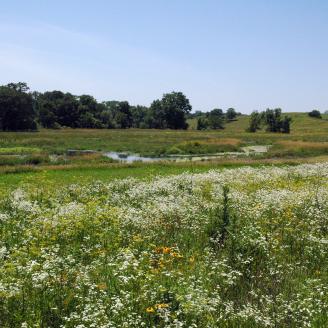
Fact Sheets: Conservation Insights and Science Notes
The below fact sheets include Conservation Insights and Science Notes on the effects of voluntary conservation on wetlands. Fact sheets within each category are organized in descending order by date.
Conservation Insights
- Restored Wetlands in California’s Central Valley Provide Nutrient Management and Waterfowl Habitat, 2024 (709.75 KB)
- Storage and Release of Water in Coastal Plain Wetlandscapes, 2024 (1 MB)
- Maximizing the Water Quality Benefits of Wetlands in Croplands, 2023 (2.43 MB)
- Soil Influences on Water Balance in Wetlands May Impact Wetland Effectiveness in Achieving Different Restoration Objectives, 2020 (1.63 MB)
- USDA Conservation Programs and Pesticides in Great Plains Depressional Wetlands-Texas to North Dakota, 2017 (586 KB)
Science Notes
Croplands
- Estimating the Effects of Wetland Conservation Practices in Croplands: Approaches for Modeling in the CEAP-Cropland Assessment, 2018 (465 KB)
- Assessing the Effects of Wetland Practices in Agricultural Landscapes: A Conceptual Model for Wetland Plant Diversity, 2015 (768 KB)
Prairie Pothole Region
- Conserving Prairie Pothole Wetlands and Surrounding Grasslands: Evaluating Effects on Amphibians, 2014 (1.52 MB)
- Conserving Prairie Pothole Wetlands: Evaluating Their Effects on Carbon Sequestration in Soils and Vegetation, 2012 (772 KB)
Mid-Atlantic Region
- Functional Assessment of Depressional Wetlands Using Remote Sensing, 2021 (2.97 MB)
- Headwater Wetlands Buffer Variability in Water Levels and Ecosystem Services at the Catchment Scale, 2021 (1.04 MB)
- A Novel Geospatial Modeling Tool Can Infer Wetland Function, 2020 (1.55 MB)
- Assessing Cumulative Impacts of Wetlands on Watershed Hydrology Using an Improved Hydrologic Modeling Approach, 2019 (2.1 MB)
- Assessing Cumulative Impacts of Wetlands on Watershed Hydrology Using an Improved Hydrologic Modeling Approach, 2019 (1.18 MB)
- Role of Prior Converted Croplands on Nitrate Processing in Mid-Atlantic Agricultural Landscapes, 2017 (1.6 MB)
- Assessing Wetland Morphometrics and Ecosystem Functions in Agricultural Landscapes of the Atlantic Coastal Plain Using Fine Scale Topographic Information, 2015 (320 KB)
- Light Detection and Ranging (LiDAR) for Improved Mapping of Wetland Resources and Assessment of Wetland Conservation Practices, 2014 (3.08 MB)
California Central Valley
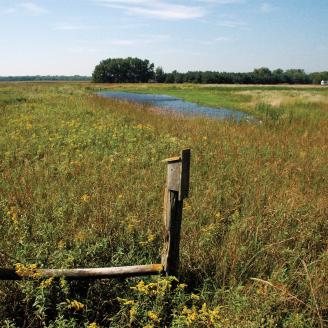
Webinars and Blogs
The below Conservation Outcomes Webinar recordings feature scientists and other subject matter experts speaking on the effects of voluntary conservation across the nation's wetlands. Blogs related to CEAP wetland assessments are also included. Webinar recordings are organized in descending order by date. Visit the Conservation Outcomes Webinar Series webpage to access information on upcoming webinars.
Conservation Outcomes Webinars
- May 2, 2024 – Mapping Riverscapes to Support Productive and Resilient Working Lands: Webinar Recording (Captions Available), Additional Resources One-Pager, Presentation Slides
- May 11, 2023 – Forest Management and Water Yield: Tool Development and Synthesis of Outcomes for Embedded Wetlands: Webinar Recording (Captions Available), Presentation Slides, and Additional Resources One-Pager
- October 22, 2020 – Quantifying Conservation Effects on Multiple Wetland Ecosystem Services: Understanding Tradeoffs is the Name of the Game: Webinar Recording
Blogs
CEAP Wetland Highlights
The below highlights represent recent resources and key findings released by CEAP on wetland conservation efforts and outcomes. Visit this webpage frequently to see what's new, or browse the above publications to access a range of published resources from CEAP wetland assessments.
Restored Wetlands in California’s Central Valley Provide Nutrient Management and Waterfowl Habitat
This Conservation Insight Fact Sheet shares findings from the first study in California's Central Valley examining nutrient dynamics in a broad range of restored managed wetlands during drought and flooding periods. Findings highlight the potential for managing to improve nutrient retention.

Mapping Riverscapes to Support Productive and Resilient Working Lands
This Conservation Outcomes Webinar highlights how to identify and map key riverscapes to help maximize the benefits of riparian wetlands and support productive working lands. The presenters are Dr. Joe Wheaton, Utah State University, and Jeremy Maestas, NRCS.
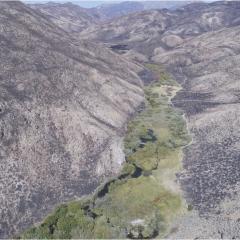
Storage and Release of Water in Coastal Plain Wetlandscapes
This Conservation Insight Fact Sheet shares findings from four contrasting coastal plain wetlandscapes in Florida that show that hydrological exchanges among wetlands increase five-fold when connected via surface pathways.

Ask the Expert: A Q&A on Agricultural Wetlands and Water Quality with Dr. Joseph Prenger
This Ask the Expert features Dr. Joseph (Joe) Prenger, CEAP Wetlands Lead. Joe answers questions about new findings on the capacity of wetlands to capture and store nutrients from cropland fields, associated water quality benefits, and NRCS resources to support wetlands on private and Tribal lands.
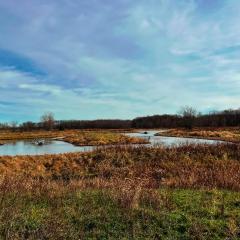
Additional Resources
Conservation Effects Assessment Project (CEAP)
USDA’s Conservation Effects Assessment Project (CEAP) is a multi-agency effort led by the Natural Resources Conservation Service (NRCS) to quantify the effects of conservation practices across the nation’s working lands.
Learn MoreFrequently Asked Questions | Conservation Effects Assessment Project
This webpage provides answers to frequently asked questions about the Conservation Effects Assessment Project (CEAP).
Last Updated: June 9, 2023
Learn MorePublications | Conservation Effects Assessment Project
USDA’s Conservation Effects Assessment Project, CEAP, provides a suite of publications highlighting the effects of voluntary conservation across the nation’s working lands.
Learn MoreConservation Outcomes Webinar Series
The Conservation Outcomes Webinar Series provides key findings, data, and tools to support producers and partners in pursuing voluntary conservation efforts across the nation's working lands.
Learn More
